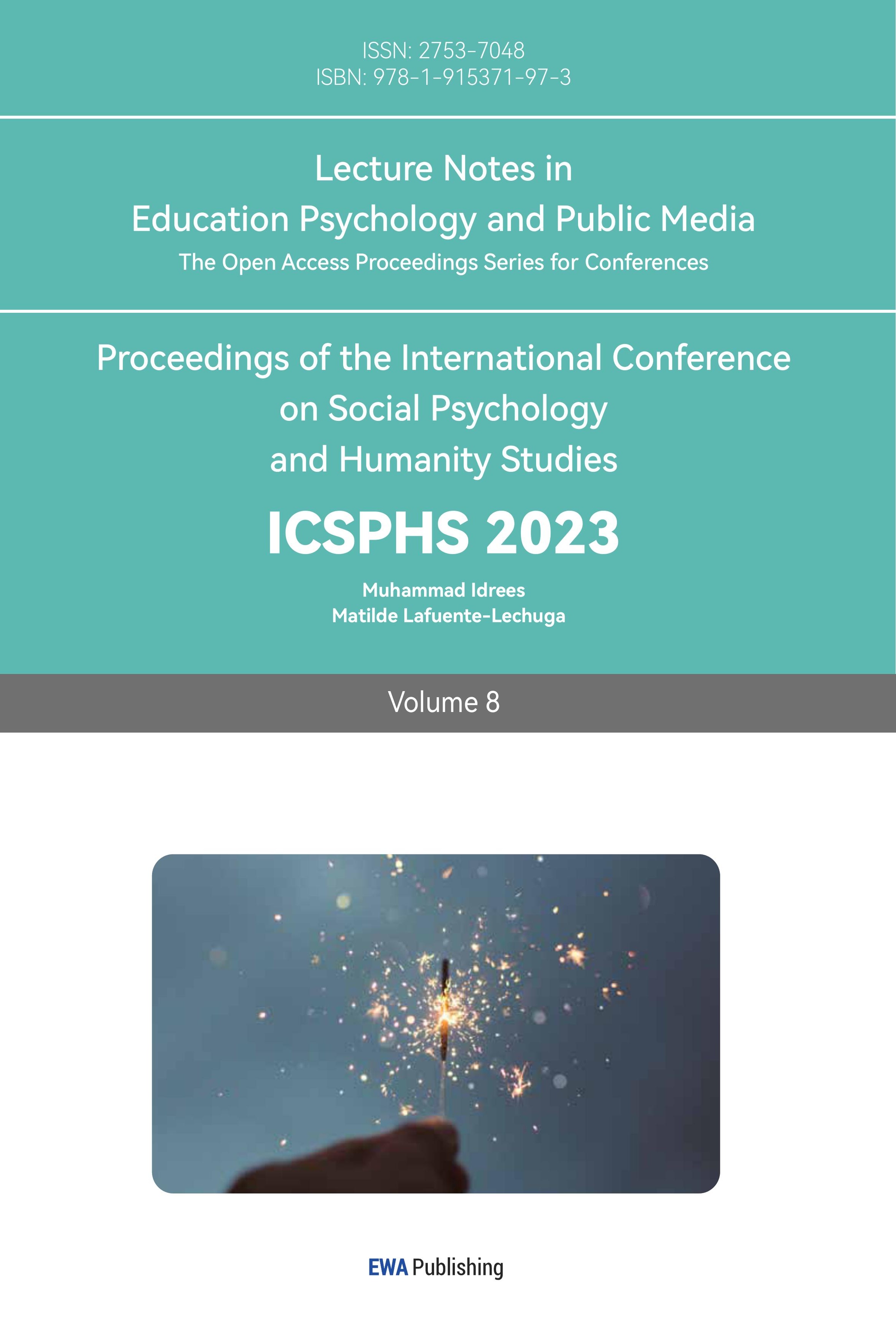References
[1]. Treasure J, Duarte TA, Schmidt U. Eating disorders. Lancet 2020; 395:899–911.
[2]. Eating disorder statics, South Carolina Department of Mental Health 2006
[3]. The Johns Hopkins Medicine, Psychiatric and Behavioral Science, 2022: Frequently Asked Questions About Eating Disorders
[4]. A Guide to Selecting Evidence-based Psychological Therapies for Eating Disorders Academy for Eating Disorders® (First edition, 2020)
[5]. The Diagnostic and Statistical Manual of Mental Disorders, Fifth Edition (DSM-5)
[6]. The 10th revision of the International Statistical Classification of Diseases and Related Health Problems (ICD-10)
[7]. Frostad, S., Calugi, S., Engen, C.B.N. et al. Enhanced cognitive behaviour therapy (CBT-E) for severe and extreme anorexia nervosa in an outpatient eating disorder unit at a public hospital: a quality-assessment study. J Eat Disord 9, 143 (2021).
Cite this article
Liou,Y. (2023). Recent Advancement in Evidence-based Psychological Therapies for Eating Disorders: A Review. Lecture Notes in Education Psychology and Public Media,8,69-76.
Data availability
The datasets used and/or analyzed during the current study will be available from the authors upon reasonable request.
Disclaimer/Publisher's Note
The statements, opinions and data contained in all publications are solely those of the individual author(s) and contributor(s) and not of EWA Publishing and/or the editor(s). EWA Publishing and/or the editor(s) disclaim responsibility for any injury to people or property resulting from any ideas, methods, instructions or products referred to in the content.
About volume
Volume title: Proceedings of the International Conference on Social Psychology and Humanity Studies
© 2024 by the author(s). Licensee EWA Publishing, Oxford, UK. This article is an open access article distributed under the terms and
conditions of the Creative Commons Attribution (CC BY) license. Authors who
publish this series agree to the following terms:
1. Authors retain copyright and grant the series right of first publication with the work simultaneously licensed under a Creative Commons
Attribution License that allows others to share the work with an acknowledgment of the work's authorship and initial publication in this
series.
2. Authors are able to enter into separate, additional contractual arrangements for the non-exclusive distribution of the series's published
version of the work (e.g., post it to an institutional repository or publish it in a book), with an acknowledgment of its initial
publication in this series.
3. Authors are permitted and encouraged to post their work online (e.g., in institutional repositories or on their website) prior to and
during the submission process, as it can lead to productive exchanges, as well as earlier and greater citation of published work (See
Open access policy for details).
References
[1]. Treasure J, Duarte TA, Schmidt U. Eating disorders. Lancet 2020; 395:899–911.
[2]. Eating disorder statics, South Carolina Department of Mental Health 2006
[3]. The Johns Hopkins Medicine, Psychiatric and Behavioral Science, 2022: Frequently Asked Questions About Eating Disorders
[4]. A Guide to Selecting Evidence-based Psychological Therapies for Eating Disorders Academy for Eating Disorders® (First edition, 2020)
[5]. The Diagnostic and Statistical Manual of Mental Disorders, Fifth Edition (DSM-5)
[6]. The 10th revision of the International Statistical Classification of Diseases and Related Health Problems (ICD-10)
[7]. Frostad, S., Calugi, S., Engen, C.B.N. et al. Enhanced cognitive behaviour therapy (CBT-E) for severe and extreme anorexia nervosa in an outpatient eating disorder unit at a public hospital: a quality-assessment study. J Eat Disord 9, 143 (2021).









